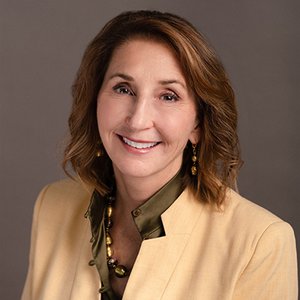There are more “for lease” signs showing up at commercial properties around Bend than there has been in a long time. To find out why, I asked some experts in the field if we should be worried. Their bottom line — there are several causes of the softening of the commercial market, but this isn’t necessarily a bad thing.
“The segment of the commercial market that has been most impacted is office space leasing,” says Jay Lyons, Principal Broker at Compass Commercial.
“Some businesses see an uncertain future and operational shifts that affect their commitments, especially to long term leases.” While Lyons sees an uptick in businesses exiting commercial leases, the explanation is more nuanced.
Much of the leased space considerations are due to the high growth of hybrid work models, and how businesses are reassessing workplace strategy to decrease their footprint and reduce costs.
One of the most significant impacts to this change can be tied to COVID-19. The pandemic accelerated the work-from-home and hybrid operations model — changes that were already underway well before 2020.
As the office environment became more hybrid, businesses adjusted. But the impacts of a market reset don’t happen overnight. Changes will occur as leases come up for renewal and businesses negotiate changes over the next few years.
Many employers are opting for smaller offices, utilizing “hoteling” (desk space for rotating users) that shrink their square footage and their lease and common area maintenance (CAM) costs.
Brian Fratzke, Principal at Fratzke Commercial Real Estate Advisors Inc., says businesses negotiating new or renewed leases are getting more precise with space needs, and right-sizing. “They don’t ask for any extra space unless there are plans for it,” he said.
Downsizing has additional advantages to businesses that go beyond reducing rental costs. Fratzke says some of the businesses implementing hybrid working environments are also gaining other benefits, including food and beverage savings from a reduction in staff and client meetings, reduced mileage reimbursement and a host of other hidden costs that come from employees working in an office.
Commercial sales have also showed signs of softening. This is mainly attributed to increased interest rates. Commercial sellers are experiencing a slowdown of sales as buyers who grew accustomed to recent record low interest rates try to make the best deal possible. Fratzke observes that they are asking for pricing adjustments to offset their increased borrowing costs. This has forced many property owners to hold on to their property rather than taking a hit to their sale price.
As interest rates have increased costs for any kind of construction, many buyers and sellers are waiting to see what the next year or two brings as they hope for deceased interest rates and construction costs. This means fewer buildings to choose from for new and expanding businesses.
But despite these disruptions, the commercial leasing market is still relatively stable. The softening could benefit the market by providing time to retrofit and build space to catch up with Bend’s underserved commercial needs.
“Bend and Central Oregon have been fairly insulated compared to major metro areas like San Francisco and Portland where their office markets are experiencing vacancy rates of 31% and 25%, respectively,” said Lyons. He says Bend is at about a 5% vacancy rate and that a typical stabilized market should hover around 10% vacancy, indicating that Bend is still doing well.
Both Lyons and Fratzke see commercial landlords struggling with the new realities that are taking shape in the market. Landlords are reevaluating building configuration and trying to understand why 10,000-25,000 square feet of office floor plates have become less desirable.
Conversely, what remains in great demand are large industrial properties for purchase by owners/users — a perennial shortage that is sorely needed in Bend.
There are other issues on the horizon that will make their mark on the evolving future of the commercial market.
Upcoming permitting and System Development Charge increases from the city of Bend will add to construction and tenant improvement costs as businesses look to locate and expand their operations.
Additionally, the city is considering a Transportation Utility Fee (TUF), which includes commercial properties, and will likely be assessed on square footage. This charge will be passed on to tenants as part of their CAMS.
Commercial brokers are watching tenant behavior and fee increases closely. “The advice I’ll give our property management department is to understand the market changes and cost increases, and start to prepare,” says Lyons.
Sage advice to Bend businesses as well.
Article appeared, November 19, https://www.bendbulletin.com/business/bend-s-evolving-commercial-landscape/article_3f6e0bb8-832a-11ee-81f6-7705f504255a.html.







0 Comments